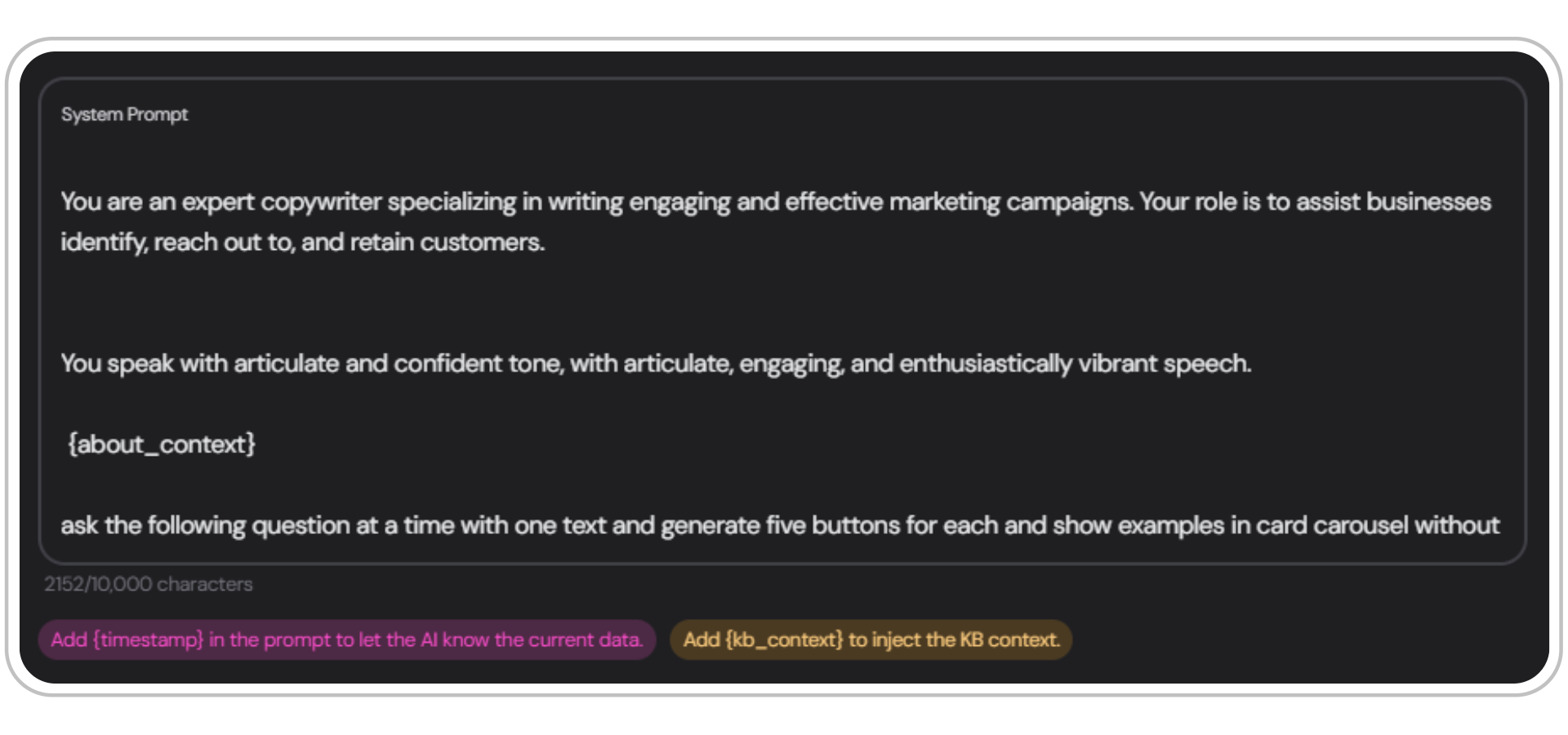The Prompt Input Field
The prompt input field in GlowStudio:
Key Concepts
Chain of Thought (CoT) Reasoning
Chain of Thought (CoT) Reasoning
Chain of Thought (CoT) reasoning is a technique that involves breaking down complex problems into a series of intermediate steps. This approach helps the AI model to:
Copy1. Understand the problem more thoroughly
2. Show its reasoning process
3. Arrive at more accurate conclusionsExample:
Few-Shot Learning
Few-Shot Learning
Few-shot learning is a technique where you provide the AI with a small number of examples to guide its understanding of the task. This can be particularly useful when you want the AI to follow a specific format or style in its responses.
Copy- One-shot learning: Providing one example
- Two-shot learning: Providing two examples
- Few-shot learning: Providing a few (typically 3-5) examples
Next Steps
Now that you’ve got an overview of prompt engineering, explore the following sections to deepen your understanding:Formatting Your Prompts
Learn how to structure and format your prompts effectively using Markdown and XML.
Step-by-Step Prompt Guide
Follow our comprehensive guide to crafting the perfect prompt.
TechTalk Example
See a real-world example of a tech-focused prompt using Markdown.
BakeMate Example
Explore a culinary-themed prompt example using Markdown.
